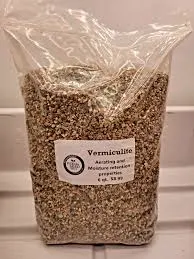Dec . 21, 2024 04:47 Back to list
Choosing the Right Insulation Material for Pipe Efficiency and Energy Savings
Pipe Insulation Material A Comprehensive Overview
In the modern world, efficient energy use and the conservation of resources are paramount concerns, especially in building construction and industrial applications. One often overlooked aspect of energy efficiency lies in the insulation of pipes. Pipe insulation materials play a crucial role in maintaining temperature control, energy efficiency, and minimizing waste in both residential and commercial settings. In this article, we will explore various types of pipe insulation materials, their benefits, applications, and key considerations for selection.
Importance of Pipe Insulation
Pipe insulation serves multiple functions. Primarily, it helps to maintain the temperature of fluids traveling through pipes, preventing heat loss in hot water pipes and reducing heat gain in cold water pipes. This temperature regulation is critical for energy conservation, as it lowers the demand on heating and cooling systems, ultimately resulting in reduced energy bills.
Furthermore, insulated pipes can mitigate the risks of condensation in humid climates. When warm air comes into contact with cold pipes, moisture can form, leading to water damage and mold growth. Effective insulation eliminates this problem by stabilizing surface temperatures. Insulation also provides soundproofing benefits; it reduces noise from water flow and pipe expansion, creating a quieter environment.
Types of Pipe Insulation Materials
Several materials are commonly used for pipe insulation, each with its own set of advantages and disadvantages
1. Fiberglass Insulation This is one of the most popular insulation materials. Fiberglass is lightweight, easily applicable, and resistant to moisture, making it suitable for both hot and cold pipes. It can withstand high temperatures and has excellent thermal resistance values.
2. Foam Insulation Typically made from polyethylene or rubber, foam insulation is flexible and easy to install. It effectively insulates pipes and provides a barrier against moisture and vapor, making it ideal for refrigeration and air conditioning systems.
3. Mineral Wool (Rock Wool) This type of insulation is fire-resistant and has excellent thermal and acoustic properties. It is particularly effective in industrial applications where pipes may be exposed to extreme temperatures. Mineral wool is also environmentally friendly, as it is made from natural or recycled materials.
4. Reflective or Radiant Barrier Insulation This is often used for applications where pipes are exposed to intense heat. Reflective insulation works by reflecting radiant heat away from the pipes, thus minimizing heat transfer. It is typically used in attics and other high-temperature areas.
pipe insulation material

5. Spray Foam Insulation This material is applied directly onto the pipes and expands to fill any gaps. Spray foam offers excellent air sealing properties, preventing heat loss and moisture ingress. However, it usually requires professional installation due to its complex application process.
Key Considerations for Selection
When selecting pipe insulation materials, several factors must be taken into account
- Temperature Rating Different insulation materials can withstand various temperature ranges. It's essential to choose a material that can handle the specific operating conditions of the pipes.
- Location of Pipes The environment where the pipes are located also influences the choice of insulation. For example, outdoor pipes may require insulation that is resistant to moisture and UV exposure.
- Fire Resistance In some applications, such as commercial buildings, the fire-resistance rating of the insulation material is a critical factor. Always ensure compliance with local building codes and standards.
- Cost and Installation The budget for insulation materials and the complexity of the installation process are important considerations. While some materials may be cheaper, they might not offer the same thermal efficiency as higher-end options.
- Sustainability Increasingly, builders and homeowners are looking for eco-friendly insulation materials. Options made from recycled or natural fibers can provide excellent insulation while minimizing environmental impact.
Conclusion
In conclusion, selecting the right pipe insulation material is essential for optimizing energy efficiency, preventing condensation issues, and enhancing overall system performance. By understanding the various types of materials available and considering key factors such as temperature rating, installation environment, and cost, homeowners and builders can make informed choices that lead to long-term energy savings and sustainability. Investing in quality pipe insulation is not only beneficial for immediate comfort and efficiency but also contributes to the broader goal of responsible energy consumption.
-
Eco-Friendly Granule Covering Agent | Dust & Caking Control
NewsAug.06,2025
-
Fe-C Composite Pellets for BOF: High-Efficiency & Cost-Saving
NewsAug.05,2025
-
Premium Tundish Covering Agents Exporters | High Purity
NewsAug.04,2025
-
Fe-C Composite Pellets for BOF | Efficient & Economical
NewsAug.03,2025
-
Top Tundish Covering Agent Exporters | Premium Quality Solutions
NewsAug.02,2025
-
First Bauxite Exporters | AI-Optimized Supply
NewsAug.01,2025
